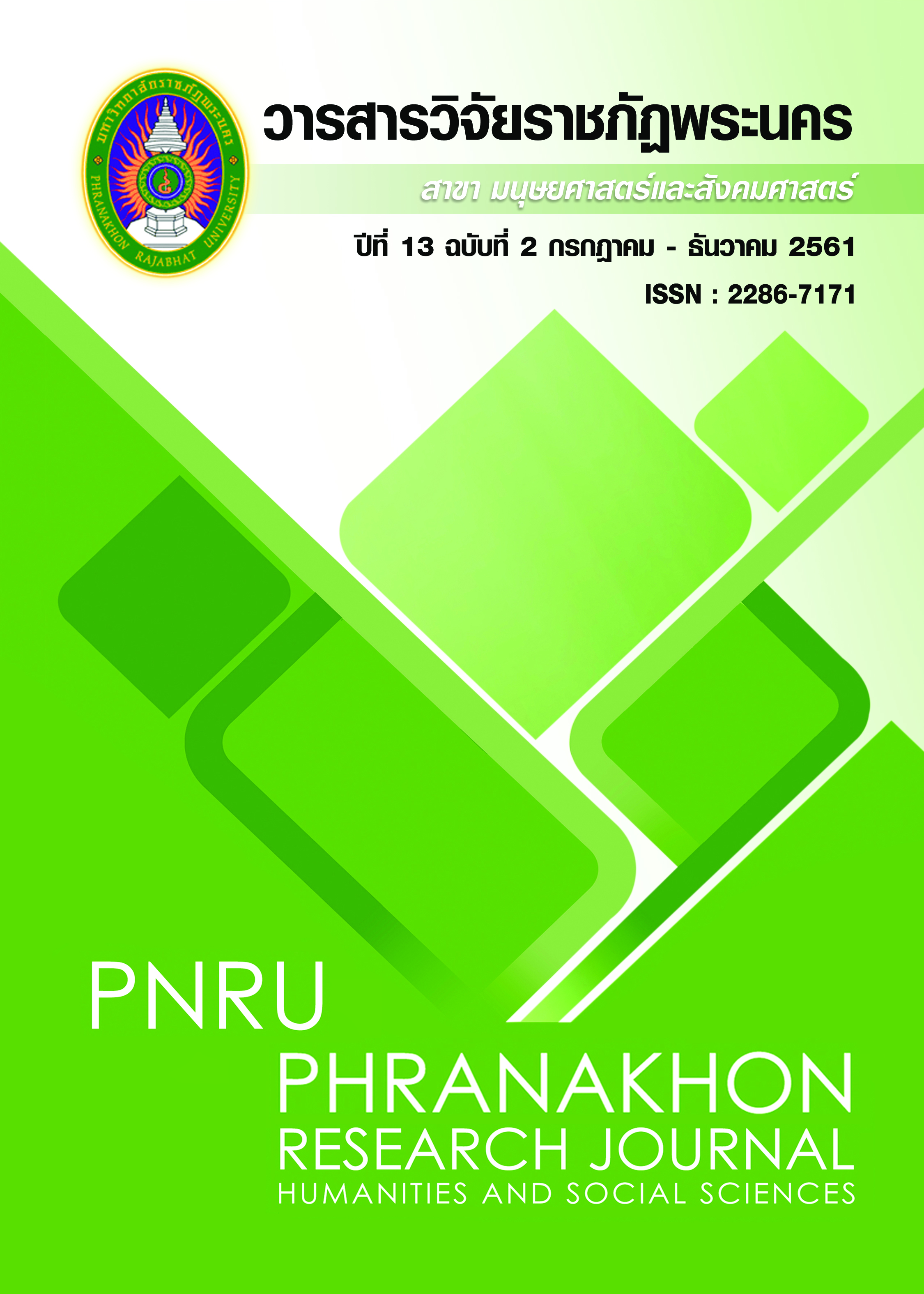GUIDELINES TO CREATE A POSITIVE CLASSROOM CLIMATE IN THE 21ST CENTURY FOR PROFESSIONAL TEACHERS
Main Article Content
Abstract
21st Century learning focuses on the essential skills to develop learners. That the effective classroom learning cannot occur unless the teachers are able to develop and implement discipline systematically by creating positive classroom climate with empathy, encouraging students to participate in academic learning and enhancing the development of the affective domain that it is to learn to understand others, and can live together with their classmates. It is due to the fact that the concepts of positive classroom management can prevent bad things, support good things and can correct the worst behaviors of the students. The teachers, therefore, should use the guidelines to create a positive classroom climate with empathy that are; 1) setting an environment which can support the students to be able to create the products from group process and to know to help others, 2) encouraging the students to participate in the class by the collaborative learning, 3) using media and information technology by sharing with others, 4) emphasizing more communication to exchange others’ opinions and listen to others with empathy, 5) giving the students some opportunities to learn how to understand others and the teachers must attend all students’ behaviors by observing and select to use an appropriate management, 6) self-disciplining to listen others’ opinions and to be a good listener to understand a communication, and 7) knowing students individually that can be able to promote their learning style and some behaviors.
Article Details
Each publish articles were copyright by Phranakorn Rajabhat University
Any contents which appeared in each articles in the journal were authors personal opinion. It did not relate to Phranakorn Rajabhat University and other instructors in the university. Each authors would take responsibility on their articles. If there are any mistake, the authors will take responsibility themselves
References
Gabriel, E. & Matthews, L. (2011). “Choice theory: an effective approach to classroom discipline and management.” The Journal of Adventist Education. February-March,20-23. Retrieved 9 September 2017, from https://circle.adventist.org/files/jae/en/jae201173032003.pdf
Giulio, R. C. (2006). Positive classrooms with Dr. Bob. Retrieved June 15, 2013, from https://www.digiulio.com/ClassMgt/#_The_Matrix
Kounin, J. (1977). The Kounin model of wittiness & organization. Retrieved June 15, 2013, from https://olameegdcequared.blogspot.com/2013/01/group-management-kounin.html
Kratochwill, T.R. (2017). Classroom management -teachers modules. American Psychological Association. Retrieved 9 September 2017, from https://www.apa.org/education/k12/classroom-mgmt.aspx
Partnership for 21st Century Learning (P21). (2015). Framework for 21st Century learning. Retrieved 9 September 2017, from https://www.p21.org/our-work/p21-framework.
Powell, S.D. (2010). Wayside teaching: connecting with students to support learning. CA: Corwin.
Sequeira, C. (2007). “Choice theory in the classroom.” Journal of Adventist Education. February-March Retrieved 9 September, 2017, from https://circle.adventist.org/files/jae/en/jae200769033507.pdf
Sottipolanun, S. (2015). Developing capability in designing classroom management by using the research-based project for third-year students of Bachelor of Education program, College of Teacher Education. Phranakhon Rajabhat University. Journal of Chandrakasemsarn. 21(41), 77- 86. (in Thai).

